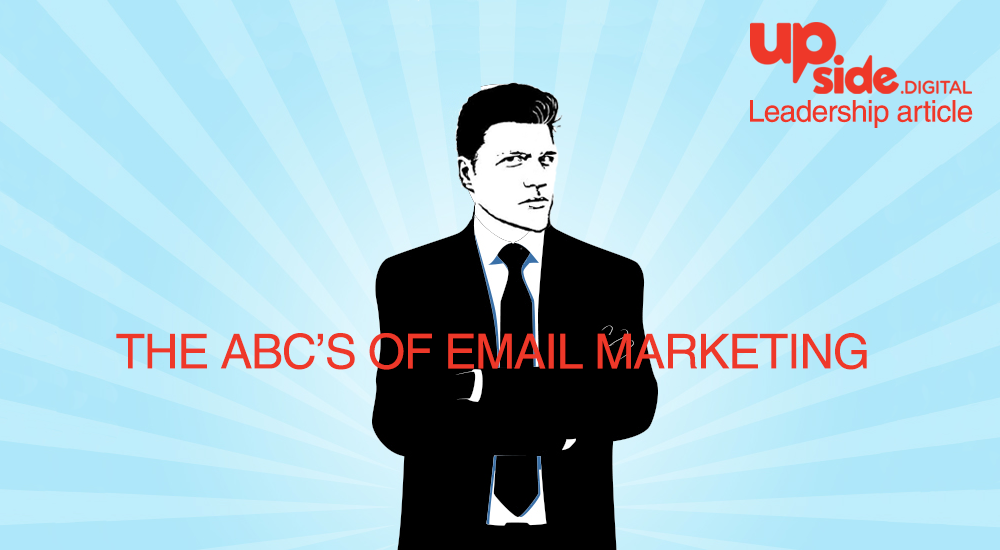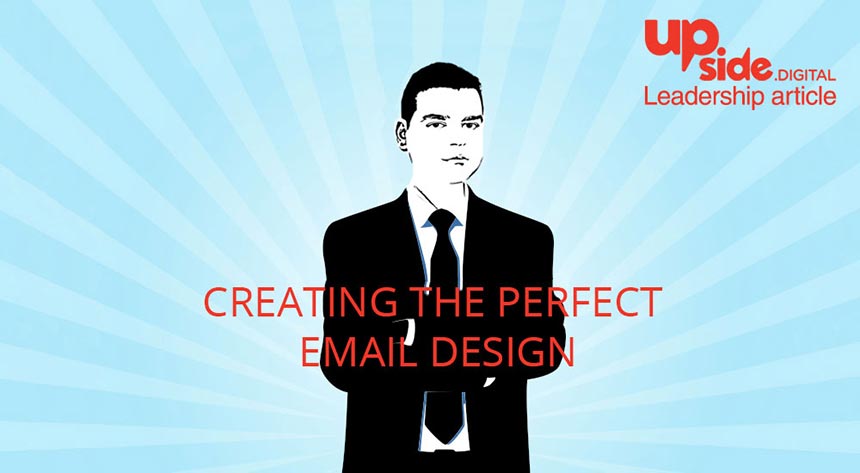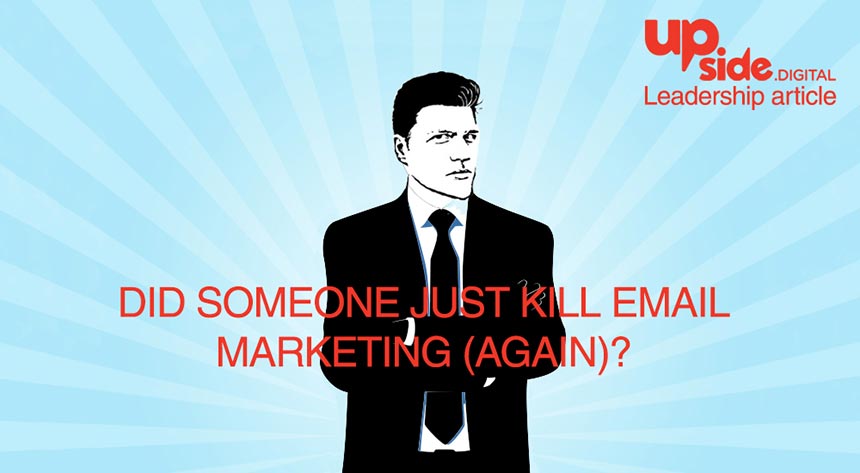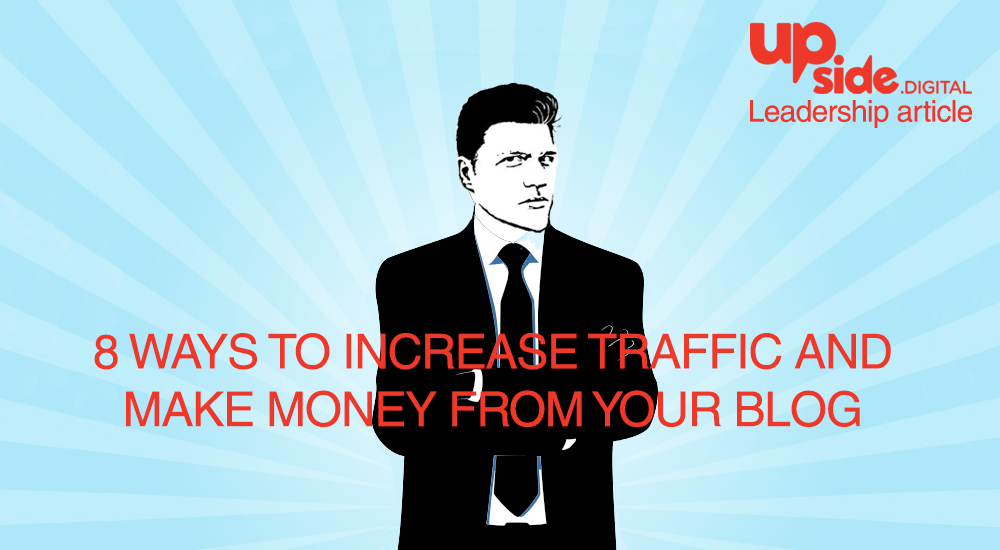The ABCs of Email Marketing
[The ABCs of Email Marketing]
Get a 246% ROI from your Email Marketing
Year on year, email marketing continues to prove itself to be one of the hardest working digital marketing channels there is. According to a recent VentureBeat study, mid size businesses report a whopping 246% ROI from their email marketing programs. As it becomes even more sophisticated through advances in automation and personalisation, these figures are likely to continue on the same trajectory.
The lesson you can take from this is, if you aren’t building and monetizing your email list, you are missing an enormous opportunity for your business.
A simple search on the subject of email marketing however, can leave you more confused than when you started, lost in comparisons between different email marketing providers, sophisticated automation and granular segmentation. Fortunately, there are a few basics which, once understood, will help set your email marketing on the path to profit.
Let’s have a look at the ABCs of Email Marketing, the fundamentals of turning emails into money.
Asking for the email
Before you can market through email, you will need to build an email list to market to. This means, asking for the email.
Pop ups, opt in boxes & landing pages are all great tactics which can be used to get those emails, but first it’s important to understand the core of why someone would opt in to your list in the first place. Once you understand the why, the rest will flow on more easily.
By opting in to your list, the person is essentially exchanging their email for whatever it is your offering in return. The value can be up front (e.g. a free PDF or discount off their next purchase) or ongoing (access to exclusive offers, weekly tips and tricks). Whatever it is, the clearer you communicate that value up front, the higher your chance for opt ins.
Using an up front incentive is an extremely effective way to get people onto your list. These small incentives are known as “Lead Magnets” and can take many forms but are usually 1-3 page PDFs that provide value relevant to the needs of your target market.
E.G. A local car mechanic could offer a free PDF on their website titled “7 Essential Tips to Save Hundreds of Dollars off Your Car Service”
Another good strategy is running competitions.
E.G. A golf club could run a competition to win a free golf lesson worth $300
Relevant competitions give you targeted leads right off the bat. In the above example you now have a list of people who are interested in golf lessons whom you can contact.
You don’t have to give away something up front, simply stating what there is to gain by being on your email list can be effective.
E.G. A food magazine could clearly state that those on their list receive free weekly recipes and discounts off partners products
The key point to remember here is that it is a value exchange. They are giving you their email and permission to contact them in exchange for some value you can provide, now and in the future. The clearer you communicate this value up front, the better your opt ins will be.
Building trust / value
Once you’ve promised value, it’s time to deliver. The more value you add, the more trustworthy you become. It is this mixture of adding value and building trust that play a critically important role in email marketing.
People don’t like being sold to all the time and will tire of a constant sales pitch. The unsubscribe button looms dangerously present, so unless you are an eCommerce offering with an extensive range, it’s dangerous to be going for the sale in every email.
It is more effective to add value to your audience. Get them to the point of actually wanting to read your emails. The better you do this the more trust you will establish and thus increase your chances of conversion.
So how do you add value? For starters… help them solve their problems. Think about your target market and what problems your product / service solves. Then think about what what information could help them solve problems generally related to your products and services.
For example…
– A hair salon you could share useful tips about hair care and styling
– A sporting equipment store could share short tutorials about how to prepare for the upcoming football season
– A caterer could offer quick and easy weekly recipes
Each of these add value to the audience and are in line with the product and service you offer, which provides an easier platform to convert this value into sales.
Also remember than people connect with other people more often than they do with faceless businesses. In order to build trust, it helps to add a personal touch to your emails, particularly for small to medium businesses. Inject some personality into your emails and write as if you were writing to a friend.
Converting to business
Once you’ve built trust and added value it’s time to convert! This, however, shouldn’t be seen as a strictly linear process. Whilst it’s important to add value and build trust before converting, these are two interrelated aspects that you must continue to mix together over an ongoing basis. Getting the balance right is part of the art of email marketing and something that comes through experience.
Converting is essentially about compelling your audience to take action. More often than not, that action is to buy something, but could also be encouraging people to share a post, answer a survey, or attend an event, but regardless of the action the principles of conversion remain the same.
In essence, it’s about clearly communicating an offer and hitting the emotion triggers to encourage immediate action.
In the context of email and the mix between adding value and converting, aligning your content with your offers can prove very effective.
If we consider the examples from the previous section…
– The hair salon could sign off their emails offering tips about home hair care and styling, by offering 30% on a full hair styling package available only for the next 48hours
– The sporting equipment store could follow up their football season preparation tips with a “Season Starter Pack” with boots, shorts and ball
– The caterer could offer Summer Special offer for those only on her list where she can not only cater a party but also show some of her cooking tricks
If your offers feel organic, consistent and natural with the rest of your content, your conversion rates will improve. Whilst this kind of approach is very effective, it’s better to do some email than none at all, so don’t feel overwhelmed if you can’t quite pull together a comprehensive strategy. There is help available.
Just add some value to your audience and then pitch your offers with a little sense of urgency, exclusivity and maybe even a discount to sweeten the deal and you will be converting in no time!
These are the basics of email marketing and with time and practice you will hone your skills.
—————————————
About the author
Anders Hampf
Anders has been working with online marketing for the last decade and is specialized in online monetization and email marketing. He has helped numerous companies to monetize their sites and come up with customized solution for his clients.

Related posts
[Creating the perfect email design: Techniques to ensure high conversion] “A user interface is like a joke. If you have to explain it, it’s not that good.” –Martin LeBlanc Making the best email is all about putting yourself into the user’s shoes. Think always about the user, like all good design pieces, then about the […]
Does email marketing belong to the past, or have we only scratched on the surface what this ‘old fashion’ sales channel can do? Well, fact is that its position on the Iron Throne of the ROI Kingdoms has been unchallenged for many years, and the trend is not changing. In fact, we see the opposite […]
When working with bloggers you come across many great writers, passionate and dedicated to their cause of producing great content for their subscribers. After all this is the reason they started their blog. Share the passion and show/teach others what is most valuable to them, and closest to their hearts. Unfortunately most bloggers are not […]





